
Millennium Soldier: Expendable, known in Japan as Seitai Heiki Expendable, and in North America as just Expendable, is a run and gun video game that was released by Rage Software for Microsoft Windows in 1999. It was later ported to the Dreamcast and PlayStation consoles. A remake of the game, entitled Expendable: Rearmed, was released for Android in 2012. It is in the format of a modern arcade game. The player starts with 7 "credits" and can continue until running out of credits. A second player can join the game at any time by pressing start.

Sega Rally 2 is an arcade racing game developed by Sega AM Annex for the Model 3 arcade hardware. It is the sequel to 1994's Sega Rally Championship. The game was first released in arcades in February 1998, and was later ported by Smilebit to the Sega Dreamcast, becoming one of the console's earliest titles when it was released in Japan on January 28, 1999. The Sega Dreamcast version was released in Europe as a launch title on October 14, 1999, and then in North America on November 27. A PC version was released in Japan and Europe that same year, with the North American release following suit in September 2000, where it was published by Mattel Interactive.

Hydro Thunder is an arcade inshore powerboat racing video game originally released by Midway Games in February 1999 and later released for the Sega Dreamcast as a launch title later that year. It was also released for the PlayStation and Nintendo 64 in early 2000. This game is part of Midway's Thunder series of racing games, which includes Offroad Thunder, 4 Wheel Thunder, and Arctic Thunder. Hydro Thunder Hurricane, a sequel to Hydro Thunder, was later released for the Xbox 360 on July 27, 2010 on Xbox Live Arcade.

Fighting Force 2 is a beat 'em up/shooter video game, the sequel to 1997's Fighting Force. The game was released for the PlayStation and Dreamcast and was developed by Core Design and published by Eidos Interactive.

TrickStyle is a futuristic racing video game developed by Criterion Games and published by Acclaim Entertainment for the Dreamcast and Microsoft Windows. Set in the future, the player takes part in stunt-filled hoverboard races through London, Tokyo, and Manhattan, or inside a massive arena called the Velodrome. AirBlade by Criterion and Namco is a spiritual successor. The game received mixed reviews from critics, who praised its graphics and physics, but criticized its gameplay, animations and sound.

Armada is a video game developed and published by Metro3D. It was released for the Sega Dreamcast in North America on November 26, 1999. Armada is a shooter role-playing game (RPG) that allows up to four players to fly about the universe, fighting the enemy, performing missions and improving their ship.
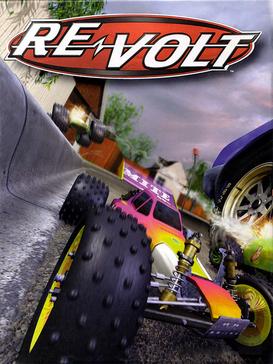
Re-Volt is a racing video game designed by Paul Phippen and Simon Harrison. It was developed by Acclaim Studios London and published by Acclaim Entertainment for Microsoft Windows, Nintendo 64, PlayStation and Dreamcast.

Cyber Troopers Virtual-On Oratorio Tangram is a 1998 Japanese Sega Model 3 arcade action game that was later ported to the Sega NAOMI arcades and the Dreamcast home console in Japan in 1999 and North America in 2000. Oratorio Tangram is a 3D fighting game where the player assumes control of a giant humanoid robot, and is a sequel to the 1996 video game Virtual On: Cyber Troopers. A re-release of the game, entitled Virtual-On Oratorio Tangram Ver.5.66, was released worldwide for Xbox 360 on April 29, 2009.
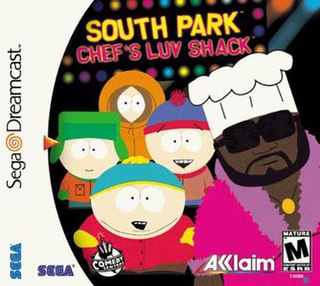
South Park: Chef's Luv Shack is a 2D game show-style party video game and is a sequel to the 1998 video game South Park, itself based on the American animated sitcom of the same name. Developed by Acclaim Studios Austin and published by Acclaim Entertainment, it was released in 1999 for the Dreamcast, Microsoft Windows, PlayStation and Nintendo 64. Its gameplay involves playing minigames and the ability to play against other players in a challenge for the most points. It also involves trivia questions about South Park and other topics.
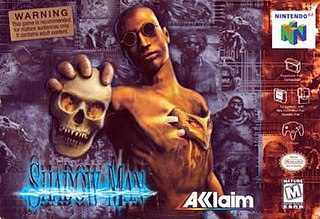
Shadow Man is an action-adventure video game developed by Acclaim Studios Teesside and published by Acclaim Entertainment. It is based on the Shadow Man comic book series published by Valiant Comics. The game was announced in 1997 and was originally slated for a late 1998 release on Nintendo 64 and an early 1999 release for Microsoft Windows, but was delayed to August 31, 1999. A PlayStation version was also released on the same day. A Dreamcast version was released three months later on December 1.

F-1 World Grand Prix, developed by Paradigm Entertainment, is a Formula One racing game/sim first released in 1998 for the Nintendo 64 game console and to later platforms including the Sega Dreamcast, Microsoft Windows, Sony PlayStation, and Game Boy Color. The Nintendo 64 version is based on the 1997 Formula One season, featuring each of the 17 circuits from the season and all 22 drivers, with the exceptions of Jacques Villeneuve and the MasterCard Lola team.

Monaco Grand Prix: Racing Simulation 2, also known as just Monaco Grand Prix or Racing Simulation: Monaco Grand Prix, is a Formula One racing game developed and published by Ubisoft for the Windows, Nintendo 64, PlayStation, and Dreamcast. It was released in 1998–1999. A sequel, Racing Simulation 3, was released in 2002.
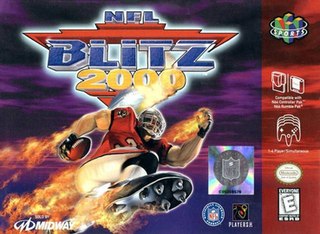
NFL Blitz 2000 is a video game released in the arcades in 1999 and then ported to the PlayStation, Nintendo 64, Dreamcast, Microsoft Windows, and Game Boy Color. It is the third game in the NFL Blitz series.

Test Drive 6 is a racing video game developed by Pitbull Syndicate for PlayStation, Microsoft Windows and Dreamcast. In the United States the game was published by Infogrames North America, while in Europe the game was published by Cryo Interactive. The game featured 37 licensed cars, plus four police car variants. As a first for the series, cars from General Motors are not playable in this game, instead they appear as traffic cars. The soundtrack featured industrial rock and techno music from artists such as Fear Factory, Lunatic Calm and Cirrus.

Centipede is a 3D remake of the 1981 Centipede arcade game from Atari, the original of which was and designed by Ed Logg and Dona Bailey. It was published by Hasbro Interactive in 1998 under the Atari Interactive brand name.

Redline Racer is a racing game that was developed by Criterion Games and published by Ubi Soft.
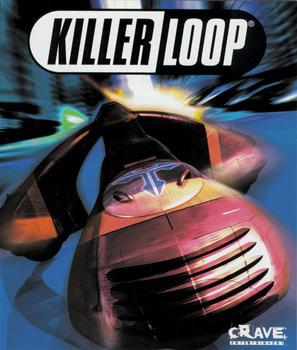
Killer Loop is a futuristic racing game released in 1999-2000. It was developed by VCC Entertainment and published by Crave Entertainment.
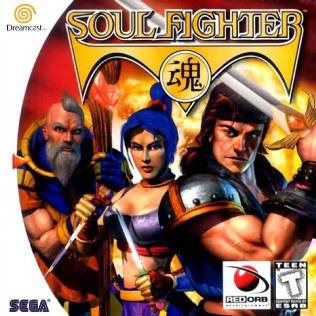
Soul Fighter is a 3D beat 'em up video game developed by Toka and published by TLC Multimedia for the Sega Dreamcast in 1999.

Q*bert is a remake of the 1982 arcade game of the same name with 3D graphics. It was developed by Artech Studios and released by Hasbro Interactive on the PlayStation and Microsoft Windows in 1999, on the Dreamcast in 2000, and on Mac OS in 2001.

Mr. Driller is a 1999 puzzle arcade game developed and published by Namco. Versions for the PlayStation, Dreamcast, Microsoft Windows, Game Boy Color, WonderSwan Color, mobile phones, and iOS were also released. Controlling Susumu Hori, the titular "Mr. Driller", the player must dig their way to the bottom of the screen by destroying colored blocks that litter the playfield. Blocks will be cleared if four or more are touching each other, which can be used to cause chain reactions. Susumu has a constantly-depleting oxygen meter that can be refilled by collecting air capsules found throughout stages.




















